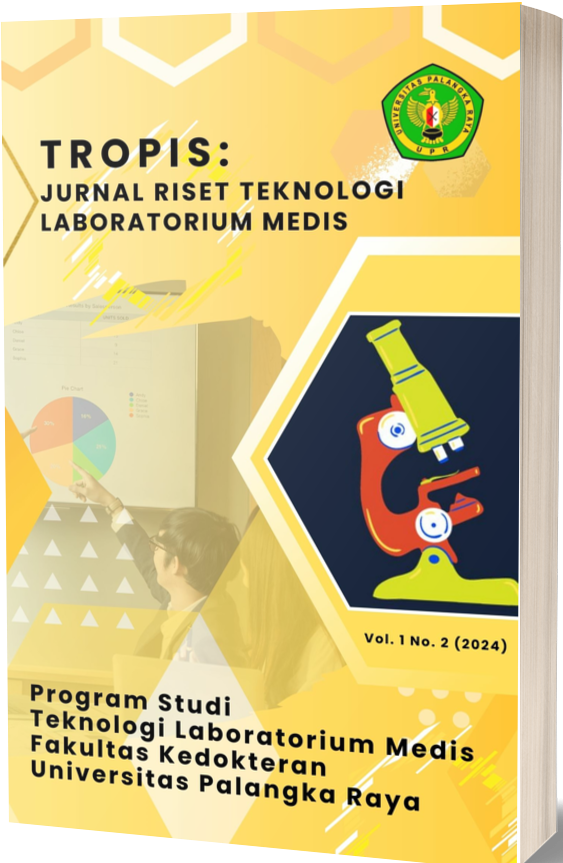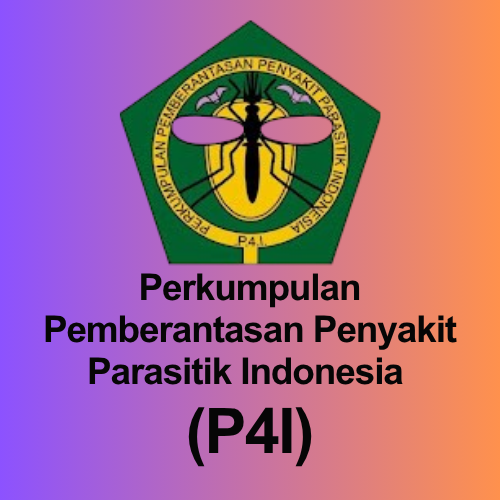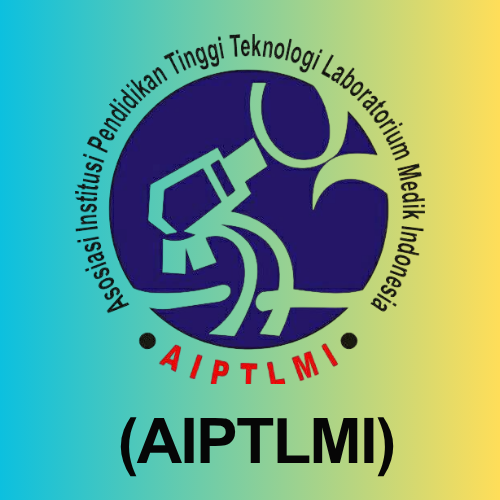Uji kepekaan antibiotik kanamisin terhadap isolat klinis Mycobacterium tuberculosis menggunakan metode mycobacterium growth indicator tube (MGIT) 960
DOI:
https://doi.org/10.37304/tropis.v1i2.13470Keywords:
Antibiotics, Kanamycin, Sensitive, TuberculosisAbstract
Tuberculosis (TB) is an infectious disease that is a major cause of ill health and one of the main causes of death throughout the world. TB is caused by Mycobacterium tuberculosis, this disease usually attacks the lumgs but it can also attack other parts of the body. Kanamycin is one of the main second-line drugs for the traetment of tuberculosis. The patients suffering from tuberculosis are caused by multing-resistent strains with resistence to anti-tuberculosis drugs. Kanamycin is an aminoglycoside antibiotic that works to inhibit the protein synthesis process of microorganisms. This research aimed to determine the sensitivity of the antibiotic kanamycin to clinical isolates of TB by using the Mycobacterium Growth Indicator Tube (MGIT) 960 method. The type of reaserch used descriptive with an experimental method which aimed to test the sensitivity of the antibiotic kanamycin to clinical isolates of Mycobacterium Growth Indicator Tube (MGIT) 960. From the results of reaserch conducted on 20 (100%) samples, 4 (20%) samplesm were resistent, and 16 (18%) samples sensitive. This proves that the antibiotic kanamycin is stil suitable for use because the examinations results obtained showed that the antibiotic was still sensitive in some respondents who used the amtibiotic.
Downloads
References
Alsagafi, H; Mukty, H.A. (2005). Dasar-Sasar Ilmu Penyakit Paru, Surabaya: Airlangga University Press.
Astriany, D.-, Husein, S. G., & Mentari, R. J. (2018). Karakterisasi Bakteri Mycobacterium tuberculosis Menggunakan Spektrofotometri Fourier Transform Infrared. Jurnal Sains Dan Teknologi Farmasi Indonesia, 6(2), 13–21.
Eva Maria Widyasari, Misyetti, T. H. A. W. dan W. N. (2013). Karakteristik Fisikokimia Kit Kering Kanamycin. Биотехнология, 1, 51–58. DOI: http://dx.doi.org/10.17146 /jstni.2013.14.2.1267
Febriani, A., Sijid, S. A., Hidayat, K.S., Muthiadin, C., & Zulkarnain, Z. (2022). Gambaran hasil pemeriksaan mikroskopik basil tahan asam pada penderita tuberkulosis paru di BBKPM Makassar. Filogeni: Jurnal Mahasiswa Biologi, 2(1), 21–26. https://doi.org/10.24252/filogeni. v2i1.28631.
Mar’iyah, K., & Zulkarnain. (2021). Patofisiologi penyakit infeksi tuberkulosis. Prosiding Seminar Nasional Biologi, 7(November), 88–92. https://doi.org/10.24252/psb. v7i1. 23169.
Mei, S., Rahman, D., Sijid, S. A., & Hidayat, K. S. (2023). Pemanfaatan tes cepat molekuler ( TCM ) GeneXpert sebagai alat diagnostik TB paru di Balai Besar Kesehatan Paru Masyarakat Makassar (BBKPM).3(1),55–59. https://doi.org/ 10. 24252/filogeni.v3i1.29561.
Nurindi, F. S., Himayani, R., Prabowo, A. Y., Yusran, M., (2018). Hubungan Durasi Penggunaan Etambutol Fase Intensif Kategori 1 terhadap Gangguan Persepsi Warna dan Penurunan Tajam Penglihatan pada Penderita Tuberkulosis di Puskesmas Rawat Inap Panjang Kota Bandar Lampung. J Agromedicine, 5(1), 399–402.
Perhimpunan Dokter Paru Indonesia. (2021). Tuberkulosis Pedoman Diagnosis dan Penatalaksanaan di Indonesia. In Perhimpunan Dokter Paru Indonesia (Vol. 001, Issue 2014).
Pratama, P. S., & Indarjo, S. (2021). Perilaku Ibu dalam Pemberian Isoniazid untuk Pencegahan Penularan Tuberkulosis Anak Article Info. Indonesian Journal of Public Health Nutrition, 1(3), 679–686. PHN. Doi: 10.15294/IJPHN.V1I3.49000
Pratomo, G. S., & Dewi, N. A. (2018). Tingkat Pengetahuan Masyarakat Desa Anjir Mambulau Tengah terhadap Penggunaan Antibiotik. Jurnal Surya Medika, 4(1), 79–89. Doi:10.33084/jsm.v4i1.354
Rahmawati, H., & Rahmaniati, M. (2020). Analisis Spasial Kasus Baru Tuberkulosis BTA (+) terhadap Kepadatan Penduduk di Jawa Tengah Tahun 2016-2018. Jurnal Ilmu Kesehatan Masyarakat, 9(03), 137–143. (2020).
Rini, I. A., Oktaviani, I., Asril, M., Agustin, R., & Frima, F. K. (2020). Isolasi Dan Karakterisasi Bakteri Penghasil Iaa (Indole Acetic Acid) Dari Rhizosfer Tanaman Akasia (Acacia mangium). Agro Bali: Agricultural Journal, 3(2), 210–219. DOI: 10.37637/ab.v3i2.619 Riskesdas. (2018).
Laporan Provinsi Sulawesi Selatan Riskesdas 2018. In Badan Penelitian Dan Pengembangan Kesehatan (Vol. 110, Issue 9).
Rukminiati, Y. (2012). Uji Kepekaan Obat Anti Tuberkulosis Lini Kedua Menggunakan BACTEC Mycobacterium Growth Indicator Tubes (MGIT) 960. Jurnal Kefarmasian Indonesia, 43–47.
Sampurno, O. D. (2015). Tinjauan farmakogenomik rifampisin. Jurnal Biotek Medisiana Indonesia, 4(2), 59–70.
Saraswati, F., Murfat, Kz., Rasfayanah, Wiriansya, E. P., Akib, M. N. ., Rusman, & Latief, R. (2022). Karakteristik Penderita Tuberkulosis Paru Yang Relaps Di RS Ibnu Sina Makassar. Jurnal Mahasiswa Kedokteran, 2(5), 359–367. https://doi.org/10.33096/fmj.v2i5.8
Setiawan, H., & Nugraha, J. (2016). Analisis Kadar IFN-γ dan IL-10 pada PBMC Penderita Tuberkulosis Aktif, Laten dan Orang Sehat, Setelah di Stimulasi dengan Antigen ESAT-6. Jurnal Biosains Pascasarjana, 18(1), 50. h. https://doi. org/10.20473/jbp.v18i1.2016.50-63.
Siahaan, P. B. C. (2022). Perbandingan Uji Diagnostik Gen Expert Mtb/Rif Dengan Kultur Sensitivitas Antibiotik Dalam Mendeteksi Resistensi Rifampicin Mycobacterium tuberculosis Pada Pasien Tb Paru Di Rsup H. Adam Malik Medan. 7(2).
Wati, M. R., Reviono, Putranto, W., Sutanto, Y. S., & Harsini, H. (2018). Pengaruh Faktor Risiko terhadap Waktu Timbulnya Efek Samping Kanamisin pada Tuberkulosis Resistan Obat. Majalah Kedokteran Bandung, 50(2), 86–92. https://doi.org/10.30605/biogenerasi.v7i2.1912
Downloads
Published
How to Cite
Issue
Section
License
Copyright (c) 2024 Tropis: Jurnal Riset Teknologi Laboratorium Medis

This work is licensed under a Creative Commons Attribution-NonCommercial-ShareAlike 4.0 International License.












